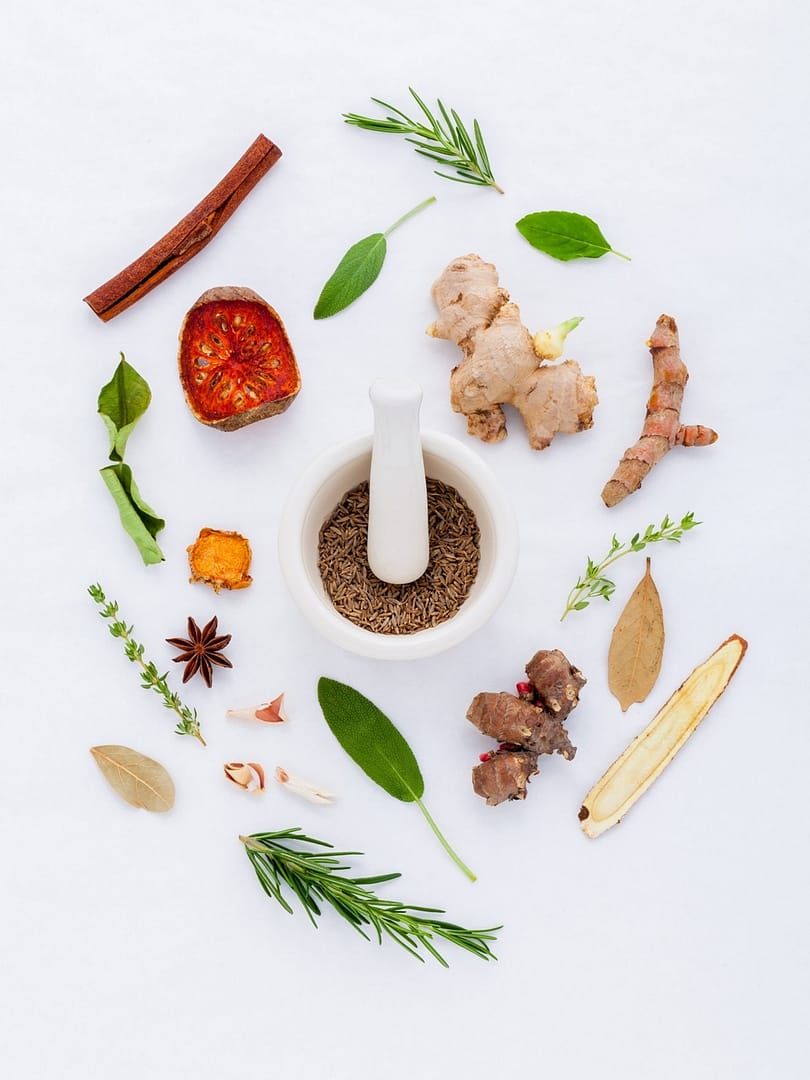The flu is here.
The longer nights, the colder days, signal the onset of our least favorite winter acquantance—influenza or the flu. The coming and present flu season is as reliable as the change of seasons. You might say it comes in a close runner-up to notorious death and taxes.
The Centers for Disease Control (CDC) is the go-to in monitoring the progression of the flu. According to the CDC, every state and territory except Hawaii, Guam, U.S. Virgin islands, and the District of Columbia report widespread influenza activity as of 1.6.18.
Does the flu vaccine work?
It is hard to miss the flu vaccine advertisements this time of year. Whether it be your local pharmacy or the nearby walk-in medical clinic, the flu vaccine dominates the eye. The flu vaccine is the mainstream approach to flu prevention. The main question of the flu vaccine is simply does it work?
The evidence-based, historical perspective on the flu vaccine is that the flu vaccine simply doesn’t work. This statement may or may not surprise you. The evidence is what supports this statement. The problem when it comes to vaccines is that sometimes politics and not objective analysis of the evidence reigns supreme. Politics has a way of corrupting evidence and both sides are guilty. The independent Cochran review has looked at the flu vaccine research numerous times and has found that the flu vaccine consistently does not prevent flu transmission and does not prevent flu complications such as pneumonia and hospitalization. That is the unbiased evidence on the effectiveness of the flu vaccine. If the flu vaccine does not prevent transmission and does not prevent flu complications like pneumonia and hospitalization, what really is the flu vaccine good for? What really is its purpose? One has to wonder.
According to recent publications, this year’s match rate of the flu vaccine is very, very poor. The prestigious New England Journal of Medicine reported the preliminary flu vaccine to be 10% effective this year so far! This is consistent with the historical poor match rate of the flu vaccine that I highlight in a previous blog post-The Flu Vaccine is the Proof in the Pudding. Yet, despite both these facts, the New England Journal of Medicine editors called for a universal flu vaccine. This is nothing more than just barking up the same tree despite nothing up the tree. For the flu vaccine to work, the flu vaccine gods that determine which strains to include in the flu vaccine must correctly match the influenza strains in the vaccine with the influenza strains present in the environment. The match rate actually is historically so bad, I wonder if a simple coin flip might provide better results. Again, whether you like it or not, that is the evidence.
The flu vaccine, the match rate, and Tamiflu are really missing the mark in the prevention and the treatment of the flu. The prevention and treatment of the flu is in significant need of a paradigm change, a different perspective, a new forest of trees to search. The good news is that best treatment is always prevention and the ability to prevent the flu is readily available at our historical fingertips.
Enter my parents over Christmas break. My mom read the article about the widespread influenza outbreak I referenced above and asked me what I recommended to help her and my dad prevent the flu for them this year. When momma asks, I have got to deliver. Here are my fab 5 for flu and cold prevention.
Elderberry
The cream de la cream for natural flu prevention is the Elderberry; elder for short The Elderberry’s use is as old as history. Medicinal therapies using Elderberry can be found as far back in history as ancient Egyptian texts, Greek writings, Roman teachings, and in old Native American folk medicine. As in many historical medicinal references, Hippocrates considered the father of western medicine is credited for the wider use of Elderberry. The Black elder is the prominent well studied plant found in Europe. The American elder, known as the common elder, is a relative of the Black elder. In contrast to the Black elder, the American elder is less studied. Due to the volume of evidence, the Black elder is my preference. The proposed mechanism of the elderberry is through immune stimulation. As good as the Elderberry works alone, its combination with the herbal therapy echinacea, makes it shine that much more.
The combination of Elderberry and echinacea is my favorite when it comes to the prevention and therapy in the cold/flu season. Elderberry, that is American elder, is a large deciduous shrub native to eastern and central North America. Echinacea is a perennial flower of which there are several medicinal varieties: Echinacea Pallida, Echinacea Purpurea, and Echinacea Paradoxa. The Elderberry and Echinacea herbal therapies have a long folk medicine history of stimulating the immune system and treating the cold/flu; however, the anti-viral evidence of the effectiveness of the Elderberry and Echinacea is short-term, limited and at times inconclusive. The majority of the lacking evidence with these therapies is the lack of the number of studies and in-vivo studies. It is one thing to show anti-viral activity in a petri dish; it is quite another to do so in a human.
That being said, a 2015 study out of the Czech Republic, may be the beginning of the end in closing the chapter on this book. This study was a multi-site (29 general medical practices), randomized, double-blind study of 473 patients ages 12 to 70 with early clinical influenza symptoms. All patients that presented and included in the study with clinical influenza symptoms were evaluated and confirmed for the influenza virus virologically. The patients included in this study were laboratory confirmed patients with the flu. The study compared the drug Tamiflu to an “Echinaforce Hotdrink” that consisted of a combination of Elderberry and Echinacea purpurea. The results are quite astonishing. The Elderberry and Echinacea “hot drink” outperformed Tamiflu at each day of treatment (see figure below). Overall, the Elderberry and Echinacea “hot drink” outperformed the prescription drug Tamiflu in symptom resolution, equaled Tamiflu in time to recovery, had a significantly lower side effect profile (see second figure below) and all this at a fraction of the cost.
Vitamin D
Hippocrates said, “whoever wishes to investigate medicine properly should proceed thus: in the first place to consider the seasons of the year”. There is no better example of this Hippocrates quote than that of vitamin D and the flu.
Vitamin D has been around since the first time sun touched the skin of humans. Vitamin D levels show an inverse relationship to the cold/flu season.
Seasonal variation of 25(OH)D levels in a population-based sample of inhabitants of a small southern German town, aged 50–80 years.
Cannell JJ et al in “Epidemic influenza and vitamin D” (see diagram above) showed that Vitamin D levels reach their lowest levels during the winter months. Vitamin D levels drop by an average of 24% during the winter months. Some will drop more and some less. If you already have low vitamin D levels in the summer, that average 24% drop during the winter months will decrease your vitamin D levels even more and will increase your susceptibility to the cold/flu season.
Vitamin D is preventative therapy for the cold/flu season. Vitamin D3 therapy has been shown to protect against the cold/flu season. In the “Epidemic influenza and vitamin D” study highlighted below, 2,000 IU vitamin D3 daily versus 800 IU and placebo was shown to significantly reduce the incidence of the cold/flu. That is just with 2,000 IU of vitamin D3. It has been my experience of 12+ years of Wellness medicine that 2,000 IU of vitamin D3 will only maintain further vitamin D decline. Much higher vitamin D therapy is required to increase vitamin D levels to achieve optimal therapeutic levels. A more recent 2017 meta-analysis published in the British Medical Journal (BMJ), found that daily and weekly vitamin D supplementation reduced the rates of acute respiratory tract infections in those individuals with low vitamin D. Of course, the flu and even the cold are acute respiratory tract infections.
In addition to being preventative, Vitamin D3 is active against ongoing infection. A recent study in the Journal of Virology revealed that vitamin D3 has anti-viral properties. Because if its function in the innate immune system, vitamin D3 was suggested to be a “primary method of treatment against the cold/flu virus”
Take home, Vitamin D is a proven anti-viral that works in the prevention and the treatment of the common cold and flu.
Silver nanoparticles
Most know silver as one of the common precious metals, but few know that silver has been used to prevent infections for over 6000 years. In fact, prior to modern day antibiotics, silver was the primary antibiotic used to treat infections. As early as 1000 BC, silver was critical to the production of clean drinking water. Silver nanoparticles have been shown to have antibacterial activity against methicillin-resistant Staphylococcus aureus (MRSA), Escherichia col, Pseudomona aeuroginosa, and Vibro cholera. The medicinal use of silver is well documented and almost as old as the documented existence of presence of humans on earth.
Silver nanoparticles have been shown to have broad, direct, antiviral activity against many viruses i.e. HIV-1, hepatitis B, herpes simplex, respiratory syncytial virus… In addition, to the broad, antiviral effect of silver, the mechanism of the antiviral action is equally broad. Silver nanoparticles have been shown to exhibit direct virucidal activity—rapid and direct lysing of viral membranes. In addition to the direct killing effect of viruses, silver has been shown to (1) block the binding of a virus to the human host cell, (2) block the penetration of the human host cell by a virus, (3) direct inactivation of a virus prior to cell entry, and (4) block viral replication.
What about silver and the influenza virus? In addition to the numerous antiviral effects of silver nanoparticles to numerous pathological viruses, a 2011 in vitro study found that silver nanoparticles reduced the H1N1 influenza A virus activity in the early stages of viral infection. Another in vitro study found that silver nanoparticles have direct anti-influenza virus effects. A 2009 in vitro and in vivo study proposed that silver nanoparticles can be used to prevent influenza outbreaks due to its inhibition of H3N2 influenza infection. In addition to this in vitro and in vivo evidence that silver nanoparticles directly inhibit the influenza virus, extensive historical evidence of the use of silver as a sanitizing agent and its use against infection support silver’s general anti-viral activity. In support of the historical use of silver, numerous other studies provide evidence of the direct mechanism of action of silver nanoparticles against many pathological viruses. This evidence supports the use of silver nanoparticles in both the prevention and the treatment of the influenza virus.
Not all silver nanoparticles are created equally, so contact our office to learn more.
Beta-glucans
Beta-glucans are complex carbohydrates that are structural components in the cell walls of medicinal mushrooms (i.e. maitake, shiitake…), other fungi, seaweed, baker’s yeast, oats, and barley. Beta-glucans can exist in different structural forms: beta-1,3-glucan, beta-1,6-glucan, and beta-1,4-glucan. The use of beta-glucans have been extensively studied. In fact, over 6000 studies have shown the immunomodulating or immune system strengthening effect provided by beta-glucans. Beta-glucans were first identified and described in a study published in 1941, but the medicinal use of plant containing beta-glucans can be traced back to ancient Oriental medicine. Beta-glucans have been shown to have extensive immunomodulating effects in humans that include: a reduction in inflammation, inhibition of cancer growth, protection against infection, protection of the liver, weight loss, and even has been shown to be effective in the treatment of diabetes and in the lowering of cholesterol.
In addition to the broad immunomodulating effects provided by beta-glucans listed above, beta-glucans can be an effective immunomodulating therapy that can be useful in the prevention and the treatment of influenza. The primary mechanism of effect provided by the beta-glucans is through the immune stimulating effect of the cell-mediated immune system (white blood cells) and the humoral immune system (antibodies). A strong stimulated immune system will be more effective against the common winter, viral invaders such as influenza and the common cold. Beta-glucans have been shown to be effective in the prevention and the treatment of the influenza virus in mice. Beta-glucans have been shown to reduce the viral load of the influenza virus in mice. But, what of humans? Specific studies that assess beta-glucans and influenza are lacking, but a 2009 phase II study found that 500 mg/day of beta-glucans (low dose) stimulated the immune system and reduced risk associated with upper respiratory illnesses. Another study found that beta-glucans increased the cell-mediated immune system (white blood cells) alone and in response to lipopolysaccharide. Lipopolysaccharide, or LPS, is a glycoprotein from gram-negative bacteria from the gut that have been shown to stimulate systemic inflammation, cause type II Diabetes, contribute to cancer, cardiovascular disease, and disrupt hormones (low Testosterone in men and low Progesterone in women). Though this does not provide direct evidence for beta-glucans and influenza, it is consistent with and supports the evidence of the effects of beta-glucans in other animal studies.
Vitamin C
What do guinea pigs and people have in common? They don’t make vitamin C. That’s right, we humans don’t make vitamin C. As humans, we lack the function of the enzyme L-gulono-gamma-lactone oxidase due to a genetic mutation. The only way the human body gets vitamin C is through the dietary intake of vitamin C. As with vitamin D, the majority of us don’t take in enough dietary vitamin C and the majority of Americans live in a vitamin C deficient state.
Vitamin C therapy rose to prominence with Linus Pauling in the 1970’s. Of course, no therapies will have all positive studies. But, vitamin C therapy has a large body of evidence supporting its use against the common cold and flu. Linus Pauling was an advocate for vitamin C therapy as an anti-viral therapy in the treatment of the common cold and flu. In a 1970 study, the incidence of colds was reduced by 45% and the duration of the colds was reduced by 63%. High dose IV vitamin C therapy has been shown to reduce the symptoms of the common cold and flu by 85% in a study of 715 people. An additional study showed that vitamin C reduced the incidence and the duration of cold symptoms. A large Cochrane review of vitamin C and the common cold found a reduction of both the severity and the duration of cold symptoms with vitamin C therapy. Vitamin C has been shown to be effective in the treatment of the flu, but what about prevention?
Going even further, vitamin C has been shown to have many positive immune stimulating effects that support the prevention of the flu and col. A positive immune stimulating effect will strengthen and improve the body’s immune system’s ability to protect against foreign invaders—in this case, influenza and common cold virus. A 2007 study by Wintergerst, Magginini, and Hornig discussed many of the positive immune effects of vitamin C, and still another study in 2006 discussed the large body of evidence looking at the positive effects of vitamin C on the immune system. The benefits of vitamin C even reach far beyond that with the treatment of the common cold and flu, but to an overall immune boosting effect and preventive effect with the flu and common cold
The immune enhancement effects of vitamin C should be evident over the long-term, not just the short-term. A study out of the European Journal of Clinical Nutrition in 2006 showed no change in severity or incidence of the common cold, BUT a 66% decrease in 3 or more colds over a 5 year period was seen with doses of just 50 to 500 mg daily. This study points to the long-term positive immune enhancing and anti-viral effects of low dose vitamin C. Vitamin C dosing of 50 to 500 mg is a very low dose. Imagine what a daily therapeutic dose of vitamin C could do for prevention?
Falling just outside my top 5, and an honorable mention is an essential oil blend product called inner defense. Three of the more significant essential oils in inner defense are thieves, clove, and oregano. All 3 have been shown to have anti-viral activity. The most significantly anti-viral components in these essential oils include thymol, carvacrol, and eugenol.
The influenza virus is not an annual winter rite of passage. The best way to treat the flu is to prevent the flu. The flu vaccine is historically very poor in its effect against the flu. This year is no different and historically is worse, with the CDC’s published 10% flu vaccine efficacy rate. Fortunately, there are many evidence-based natural therapies that can be used to prevent and treat this unwelcome winter guest. If you want to protect your family this influenza seasons, contact our office at 865.675.9355 to learn more.
Would you like more information? Get in touch with us today








